Volume 29, Issue 2
Displaying 1-17 of 17 articles from this issue
- |<
- <
- 1
- >
- >|
-
Article type: Cover
2015 Volume 29 Issue 2 Pages Cover1-
Published: February 25, 2015
Released on J-STAGE: June 28, 2017
Download PDF (23744K) -
Article type: Index
2015 Volume 29 Issue 2 Pages Toc1-
Published: February 25, 2015
Released on J-STAGE: June 28, 2017
Download PDF (25K) -
Article type: Index
2015 Volume 29 Issue 2 Pages Toc2-
Published: February 25, 2015
Released on J-STAGE: June 28, 2017
Download PDF (29K) -
Article type: Article
2015 Volume 29 Issue 2 Pages 68-85
Published: February 25, 2015
Released on J-STAGE: June 28, 2017
Download PDF (1734K) -
Article type: Article
2015 Volume 29 Issue 2 Pages 86-93
Published: February 25, 2015
Released on J-STAGE: June 28, 2017
Download PDF (831K) -
Article type: Article
2015 Volume 29 Issue 2 Pages 94-95
Published: February 25, 2015
Released on J-STAGE: June 28, 2017
Download PDF (279K) -
Article type: Article
2015 Volume 29 Issue 2 Pages 96-107
Published: February 25, 2015
Released on J-STAGE: June 28, 2017
Download PDF (1280K) -
Article type: Article
2015 Volume 29 Issue 2 Pages 108-118
Published: February 25, 2015
Released on J-STAGE: June 28, 2017
Download PDF (1131K) -
Article type: Article
2015 Volume 29 Issue 2 Pages 119-126
Published: February 25, 2015
Released on J-STAGE: June 28, 2017
Download PDF (794K) -
Article type: Article
2015 Volume 29 Issue 2 Pages 127-141
Published: February 25, 2015
Released on J-STAGE: June 28, 2017
Download PDF (1623K) -
Article type: Appendix
2015 Volume 29 Issue 2 Pages 142-148
Published: February 25, 2015
Released on J-STAGE: June 28, 2017
Download PDF (545K) -
Article type: Appendix
2015 Volume 29 Issue 2 Pages 150-
Published: February 25, 2015
Released on J-STAGE: June 28, 2017
Download PDF (89K) -
Article type: Appendix
2015 Volume 29 Issue 2 Pages App1-
Published: February 25, 2015
Released on J-STAGE: June 28, 2017
Download PDF (84K) -
Article type: Appendix
2015 Volume 29 Issue 2 Pages App2-
Published: February 25, 2015
Released on J-STAGE: June 28, 2017
Download PDF (84K) -
Article type: Appendix
2015 Volume 29 Issue 2 Pages App3-
Published: February 25, 2015
Released on J-STAGE: June 28, 2017
Download PDF (30K) -
Article type: Appendix
2015 Volume 29 Issue 2 Pages App4-
Published: February 25, 2015
Released on J-STAGE: June 28, 2017
Download PDF (30K) -
Article type: Cover
2015 Volume 29 Issue 2 Pages Cover2-
Published: February 25, 2015
Released on J-STAGE: June 28, 2017
Download PDF (429K)
- |<
- <
- 1
- >
- >|
